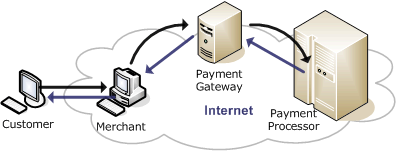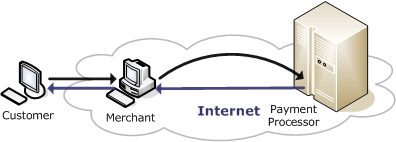4D Payments SDK - FAQ
Typically, a transaction will take place in two phases, a charge and a settlement. In the first phase a charge is made and money for the transaction is set aside from the cardholder’s account. In the second phase, that money is transferred from the cardholder to the merchant. In general, the first transaction takes place as soon as the card is submitted, allowing the merchant to quickly secure the funds for the transaction. The second phase takes place later, and is usually done in batches at the end of the business day. Settlements are done in batches because most processors limit the number of settlements that you can do during a certain period, and because it is easier and more economical to void a transaction before funds are transferred than to credit a cardholder account after the fact. If you have ever checked your bank statement to find that there is a separate total for what you have and what is available, this means that a charge has been placed on your account that has not been settled yet. A more detailed outline of a transaction is below:
- A customer provides their credit card information to a merchant. Credit card information can be submitted in a number of ways; e.g., their card is swiped though a terminal, they present their card information over the phone, or they type their card information on a website. Depending on how the customer submits their information to the merchant, they can send additional information to the merchant to verify the cardholder’s identity for fraud prevention. (If their card was present, additional data will be read from the card and submitted to the merchant to prove that.)
- A merchant submits the credit card information to either a processor for approval or to a payment gateway. If the merchant submits their information to a gateway, then the gateway will in turn submit the cardholder’s information to a processor for approval.
- The processor runs a check on the card, and will respond with an approval or rejection for the transaction to the merchant or the gateway (who will pass that information back to the merchant). The amount of funds requested will be held on the cardholder’s account, but will not be transferred out yet.
- The merchant notifies the customer of the success or failure of the transaction. If the transaction is successful, then the merchant will ship products/provide services to the customer.
- At a later time, usually at the end of the day or week, the merchant (or if the merchant is using a gateway, then the merchant’s gateway) will settle the transactions it has performed that day. By communicating again with the processor, the funds that were charged earlier are then transferred for the cardholder’s accounts to the merchant’s account.
Most credit card transactions can be broken down into two types: e-commerce transactions and card-present transactions. The fees associated with credit card transactions are dependant on the type of transaction, so it is important to note the differences between the two.
An e-commerce transaction or a mail-order-telephone-order (MOTO) transaction is a transaction where the credit card is not present. These transactions are usually either online transactions or phone transactions where the credit card number, expiration date, and billing information are taken from the customer. Because transactions where the credit card is not physically present are more prone to fraud or theft, the fees associated with these types of transactions are typically higher than then when the credit card is present for verification. The higher fees allow for the costs associated with charge-back fraud.
A card-present transaction is one where the credit card being charged is physically present and swiped through a terminal. These are referred to as POS (point of sale) transactions. The credit card number, expiration date, and any additional data are read from the magnetic stripe on the back of the credit card. Because of the added security provided by a card-present transaction, the fees associated with each transaction are typically lower.
A gateway is a value-added service provider that will, in exchange for a fee (usually a percentage of your sales and a number of associated fees), accept and process credit card transactions from you. Payment gateways generally provide additional services beyond payment processing such as transaction logging, automatic settlement, and reporting as well as additional security and fraud prevention.
Internet Payment Gateways

A payment processor is a service company that performs charges and settlements for credit card transactions. Every credit card transaction eventually goes through a payment processor.
Direct-to-Processor Transactions

A merchant account is simply a bank account that is set up for a merchant. The big difference between a merchant account and a regular bank account is that a merchant account provides support for one or more processors to deposit funds made by credit card transactions processed through them. Contact the 4D Payments support team for help setting up a merchant account enabled for a supported processor or gateway.
You simply need to make sure that you have a merchant account that is compatible with that processor. You can check with the bank that issues your merchant account about what processors are supported, but generally you are going to find that most merchant accounts support the TSYS processor.
